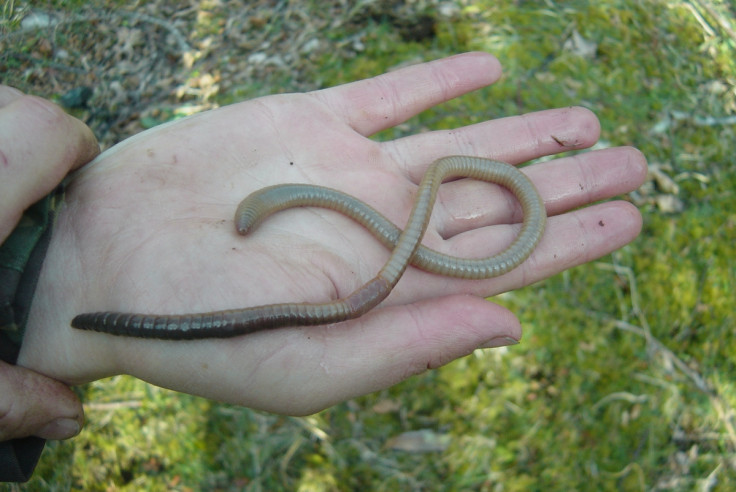Giant earthworms: 40cm-long worms discovered in Scotland are the biggest ever found in the UK

Giant earthworms have been discovered on a small island in Scotland, growing up to 40cm long – more than three times the length of the UK average. The worms are the biggest ever seen in the UK, and experts say that they can keep growing... and growing... and growing.
Rich soil and few predators have meant the earthworms on the Isle of Rum have grown to huge lengths – in some cases, they have grown to almost four times the length of the average human tongue. With nothingto stop them growing, these worms can theoretically keep getting bigger.
"These things weight about 12 and a half grams – but the normal size for these things is about four to five grams," said Kevin Butt, lead researcher on the study, on BBC Radio 4's Today programme. "When these things came out of their burrows they were like small snakes."
The researchers investigated the earthworms at the abandoned settlement of Papadil on the Isle of Rum, west Scotland. They analysed the distribution of the worms over a six year period beginning in November 2005, in both grassland and woodland.
The results showed "exceptionally large (heavier than 12g live mass) individuals were found in soils of terraces on wooded slopes." It is believed that the worms have been allowed to grow so large because of plenty of food, and a lack of terrestrial predators which usually includes moles, badgers, hedgehogs and foxes.
"These things have just have been left and have grown bigger and bigger," Butt told the Telegraph. "Without their activities we'd be a lot worse off. They're just as important as bees are in pollinating plants. They help aerate the soil and drain away water and stop surface erosion."
Following the unearthing of the giant worms, the researchers discussed the results with the Natural History Museum, who confirmed that no other specimens in the UK had been seen to grow that large. The previously-known largest worm was found in the Yorkshire Dales in the 1990s, and it had grown to eight grams – 36% lighter than the newly discovered ones.
"The discovery of these large Lumbricus terrstris (earthworms) was slightly tangential to the work we were conducting at Papadil," Butt told IBTimes. "Work on the Isle of Rum will continue, but may take a different direction – still be concerned with earthworms in agro-ecosystems."
There are more than 3,000 species of earthworm globally, and they have been reported in Australia to be more than seven times the length of the worms on the Isle of Rum, at more than three metres.
© Copyright IBTimes 2025. All rights reserved.






















